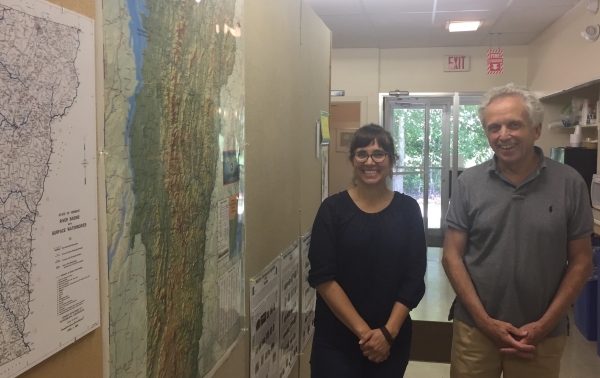BRATTLEBORO — As students return to area schools this year, serious changes are afoot in the way that teachers teach, students learn, and everyone is evaluated.
Many of these changes come as the result of Act 77, an educational reform bill that became state law in 2013 but whose effects are only now beginning to show up in classrooms across Windham County.
Act 77, the Flexible Pathways Initiative, was designed to get more students to complete high school and college and to do so by “promot[ing] opportunities for Vermont students to achieve postsecondary readiness through high-quality educational experiences that acknowledge individual goals, learning styles, and abilities,” according to the text of the legislation.
That means creating personalized learning plans - individualized curricula tailored to individual students' learning styles, interests, and ultimate career goals. The PLPs are updated once a year.
The law blurs the divide between school, home, and community by specifying “participation by families and other engaged adults” in the legislation.
It encourages mixing the high school experience with post-secondary education through dual enrollment and early college programs, as well as “blended learning,” which lets students access classes offsite via telecommunications and mix that education with the traditional classroom experience.
Striking a spark
Casey Murrow and Emily Hartz, co-directors of the Vermont Learning Collaborative, which offers professional development to 62 supervisory unions in Windham, Windsor, and Orange counties from its training facility in Dummerston, described how the new law adds flexibility to the school experience and lets a young person's natural curiosity come alive.
Murrow said that in Rutland, he watched a student sequence DNA. He has read a Middlebury teacher's description of a student investigation of water quality and biochemistry.
The result is less “seat time” and a greater “degree of autonomy” for students, Murrow said.
“It excites me that education is more authentic for teachers and kids,” said Hartz, who is on a year's leave from her job as fifth-grade teacher at Guilford Central School. The changes of Act 77 address “specific needs of unique individuals and specific skills in developing that,” she said.
Murrow said that some schools, like Brattleboro Union High School, are further ahead than others in their progress in implementing Act 77.
“It totally changes the teaching environment, and it totally changes the learning environment,” he said, describing the extent of that change in one word: “mammoth.”
Proficiency-based learning
At the same time that schools are personalizing the mechanics and logistics of local education, they are moving away from measuring graduation standards in units of classroom hours or credits.
Instead, districts in the region are beginning to implement proficiency-based learning and proficiency-based graduation standards as a new way of looking at how students are evaluated in the classroom.
Vermont's Framework of Standards, last revised in 2013, defines the skills that all students in the state should master in the classroom by measuring whether each student is proficient on each point.
In the case of Brattleboro Union High School, beginning this year, students will be evaluated on how well they can execute five “transferable skills”: clear and effective communication, self-direction, creative and practical problem solving, responsible and involved citizenship, and informed and integrative thinking.
Community involvement
Act 77 also incorporates internships, work-based learning, and career experiences into the student's academic experience, a concept that dovetails with regional economic development efforts to make sure skilled workers are available for industry.
With the help of an $18,000 grant from the Vermont Department of Labor and the participation of guidance counselors and career counselors from all over Windham County, Brattleboro Development Credit Corporation has launched its Fast Tracks to Success pilot program, said Alexander Beck, workforce and education specialist for the Brattleboro-based nonprofit.
Beck's organization has developed a curriculum that helps students discern some career goals and then works with the high schools to help those students make internships and apprenticeships part of their personalized learning plans if appropriate.
For students who want to stay in Vermont, the program can help them determine the mix of current and future education and training opportunities that will help them accomplish those goals - and meet anticipated workforce needs years down the line.
“This isn't for every [student],” Beck said. “We totally respect that.”
'Much more complicated'
With the new standards adding nuance, flexibility, collaboration, and rigor to an educational system that in many respects has remained intact since the early 1900s, teachers, administrators, school board members, students, and families are helping each other figure out how to make the engineered and deliberate chaos of the new system work.
“There's not an expert group that's got it all figured out,” Murrow said, noting that the standards are being implemented “teacher by teacher.”
“There's a learning curve for everybody,” he said.
Complicating that learning curve is the need for schools to comply with the federal Every Student Succeeds Act. The law, passed in late December, supplants the No Child Left Behind act.
Despite more flexibility in the new federal education bill, the Department of Education “has not yet put out all the rules,” Murrow said. “You can't go anywhere and find an answer.”
The Every Student Succeeds Act will still use standardized testing to measure a school's progress, and Murrow described a “tension” with where traditional standardized tests “bump into new ideas” like proficiency-based learning.
How the old and the new educational measurements will mesh is still an open question, he noted.
Hartz and Murrow pointed out that the chaos of change doesn't necessarily translate to a chaotic classroom environment. The teachers said that with students engaging in more self-directed learning and having more agency in the process, “the classroom management changes,” Hartz said.
“It inspires educators,” she said. “It inspires learners.”
